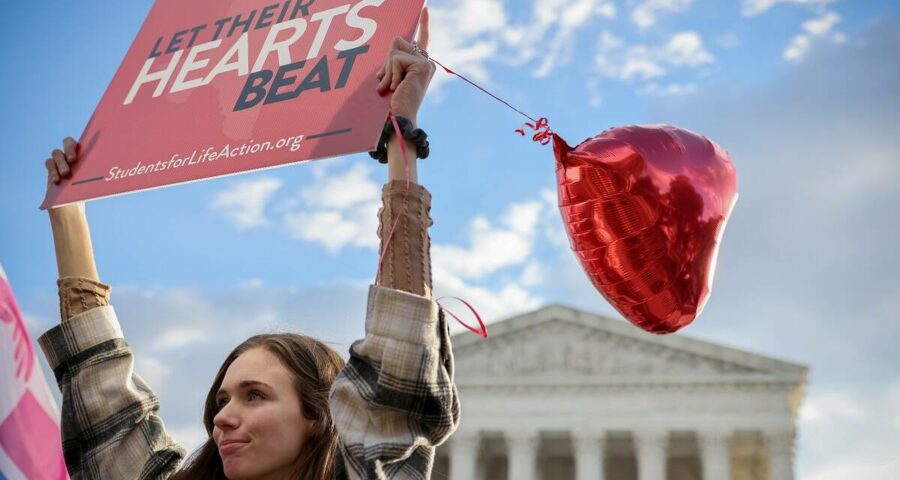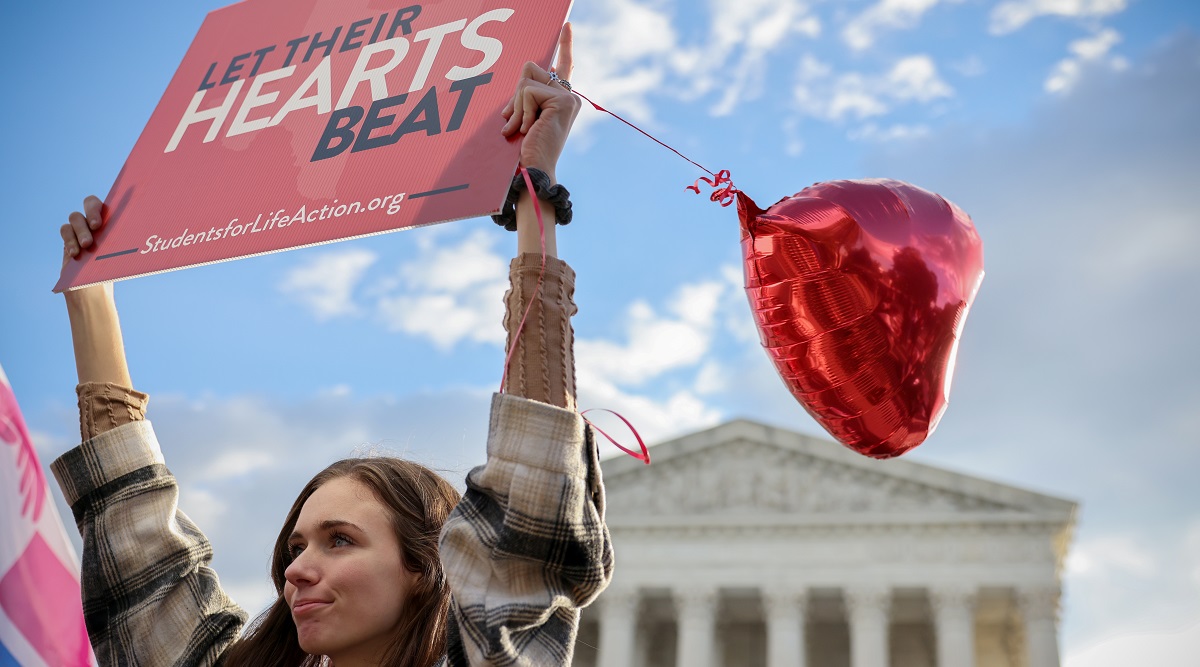Kavanaugh said that permitting a challenge might amount to closing a loophole. Barrett said the law was structured to prevent the providers from presenting a “full constitutional defense.”
After almost three hours of lively arguments Monday at the Supreme Court, a majority of the justices seemed inclined to allow abortion providers — but perhaps not the Biden administration — to pursue a federal court challenge to a Texas law that has sharply curtailed abortions in the state.
That would represent an important shift from a 5-4 ruling in September that allowed the law to go into effect. Justices Brett Kavanaugh and Amy Coney Barrett, who were in the majority in that ruling, asked questions suggesting that they thought the novel structure of the Texas law justified allowing the providers to challenge it.
Kavanaugh said that permitting a challenge might amount to closing a loophole. Barrett said the law was structured to prevent the providers from presenting a “full constitutional defense.”
A decision to allow a challenge would not conclude the case or address whether the law itself is constitutional. Instead, it would return the case to lower federal courts for further proceedings. Moreover, it was not clear whether the court would temporarily block the law while the case moved forward, if it allowed either the providers or the administration to sue.
The law, which went into effect Sept. 1, was drafted to evade review in federal court, a goal the state has so far achieved. The law, which bans most abortions after about six weeks and includes no exceptions for pregnancies resulting from rape or incest, has caused clinics in the state to turn away most women seeking the procedure.
There is little question that the ban itself is unconstitutional under two key Supreme Court precedents, Roe v. Wade in 1973 and Planned Parenthood v. Casey in 1992. Those rulings prohibited states from barring abortions before fetal viability, or about 23 weeks.
The question for the justices was whether abortion providers and the Biden administration are entitled to challenge the law in federal court. Officials in Texas say the novel structure of the law, known as Senate Bill 8, forbids such challenges.
Lawyers on both sides said the stakes were very high.
“To allow Texas’ scheme to stand would provide a road map for other states to abrogate any decision of this court with which they disagree,” said Marc A. Hearron, a lawyer for the providers. “At issue here is nothing less than the supremacy of federal law.”
Judd E. Stone II, solicitor general for the state of Texas, said allowing the providers to sue would “alter bedrock doctrines organizing the federal courts.”
The four justices who dissented in September — Chief Justice John Roberts and Justices Stephen Breyer, Sonia Sotomayor and Elena Kagan — did not seem to have changed their minds about the law. And Justices Clarence Thomas, Samuel Alito and Neil Gorsuch asked questions that suggested they thought the federal courts had no role to play.
Roberts asked a telling hypothetical question about the law, which allows plaintiffs who sue under it to win an award of at least $10,000 if they prevail.
“Assume that the bounty is not $10,000 but a million dollars,” Roberts said, adding, “Do you think in that case the chill on the conduct at issue here would be sufficient to allow federal court review prior to the end of the state court process?”
Stone said no. That answer did not seem to satisfy the chief justice.
“Nobody is going to risk violating the statute,” he said, “because they’ll be subject to suit for a million dollars.”
Stone said the Texas law “is capped at much less than that.”
“Yeah,” Roberts said, a little irritated. “My question is what we call a hypothetical.”
Breyer listed six ways in which suits brought under the Texas law differed from ordinary ones. “Anybody can sue,” he said. Second, they can sue anywhere in Texas, he added, noting that the state is bigger than Rhode Island.
Third, winning once is not a defense in a subsequent suits, he said. Fourth, prevailing plaintiffs are entitled to payment of their legal fees, he said, while defendants who win must pay their own lawyers. Fifth, he said, were the $10,000 bounties. Sixth, he said, were the limits the law placed on defendants’ ability to defend themselves on constitutional grounds.
“Is there a seventh?” Breyer asked.
Hearron added two more: the damages awarded to plaintiffs and the injunctions they are entitled to if they win are unrelated to the harm they suffered.
Kagan said Texas should not be rewarded for drafting a clever law.
“The fact that after all these many years, some geniuses came up with a way to evade the commands of” an important precedent, she said, and “the even broader principle that states are not to nullify federal constitutional rights and to say, ‘Oh, we’ve never seen this before, so we can’t do anything about it’ — I guess I just don’t understand the argument.”
The law bars state officials from enforcing it and instead deputizes private individuals to sue anyone who performs the procedure or “aids and abets” it.
That makes it hard for challengers to know whom to sue, as lawsuits seeking to block laws as unconstitutional typically name as defendants the officials charged with enforcing them. When the providers filed suit in federal court, they named, among others, every state trial court judge and county court clerk in Texas.
While it may be hard to sue to challenge the law itself, the law allows private citizens to file suits in state courts against doctors, staff members at clinics, counselors, people who help pay for the procedure and even drivers who take a patient to a clinic. Such plaintiffs, who do not need to live in Texas, have any connection to the abortion or show any injury from it, are entitled to at least $10,000 and their legal fees if they win.
People seeking to challenge laws they say are unconstitutional ordinarily sue the state officials responsible for enforcing them. A 1908 Supreme Court decision, Ex parte Young, allows such suits. But it said federal courts could not restrain state judges from hearing and deciding cases.
Hearron, a lawyer for the providers, said the solution was to issue an injunction addressed to court clerks handling suits under the Texas law.
That did not impress Alito, who had been in the majority in September. “A clerk performs a ministerial function,” he said. “Somebody shows up with a complaint, wants to file a complaint, and assuming the formal requirements are met, the clerk files the complaint. The clerk doesn’t have the authority to say, you can’t file this complaint because it’s a bad complaint.”
Officials in Texas said the procedurally proper way for abortion providers to challenge the law was to violate it, be sued and raise the unconstitutionality of the law as a defense. But a victory for a provider in such a case would set no general precedent unless the plaintiff decided to appeal and lost before the Texas Supreme Court or the U.S. Supreme Court.
In a brief filed Friday, the abortion providers wrote that the threat of being hauled into what they called “these rigged, coercive and duplicative proceedings is a core part of the harm that SB 8 imposes,” calling the legal process created by the law “constitutional Whac-a-Mole.”
When the Supreme Court last considered the law, in response to an emergency application filed by abortion providers, a five-justice majority refused to block it in a one-paragraph, unsigned order issued just before midnight Sept. 1.
“The applicants now before us have raised serious questions regarding the constitutionality of the Texas law at issue,” the order said. “But their application also presents complex and novel antecedent procedural questions on which they have not carried their burden. For example, federal courts enjoy the power to enjoin individuals tasked with enforcing laws, not the laws themselves.”
The majority in the Sept. 1 order seemed to invite other kinds of challenges. “This order is not based on any conclusion about the constitutionality of Texas’ law, and in no way limits other procedurally proper challenges to the Texas law, including in Texas state courts,” it said.
Suits brought by the federal government do not face the same procedural hurdles as ones brought by private parties, and one question for the justices Monday was whether the Biden administration can do what the Sept. 1 order said the abortion providers could not.
When the court agreed to hear appeals in the two cases — Whole Woman’s Health v. Jackson, No. 21-463, and United States v. Texas, No. 21-588 — it put them on an exceptionally fast track. But the court said it would decide only the procedural questions of who is entitled to sue, not the constitutional one of whether the law violates precedents guaranteeing a right to abortion until fetal viability.
In December, the justices will hear arguments in a separate case, Dobbs v. Jackson Women’s Health Organization, No. 19-1392, which takes on a Mississippi law that bans abortions after 15 weeks. That case is a direct challenge to the constitutional right to abortion.
Source: Read Full Article


